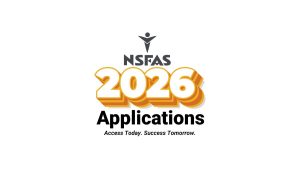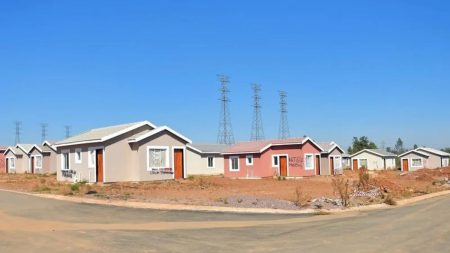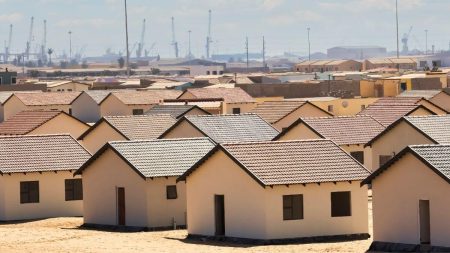The South African government introduced the Reconstruction and Development Programme (RDP) to provide free or subsidized housing to low-income citizens. For people with disabilities, accessing housing comes with additional challenges, which is why special provisions have been put in place to accommodate their unique needs.
This article explores RDP housing for disabled people, the special requirements involved, and how individuals can apply for housing that suits their needs.
What Is RDP Housing?
RDP housing is a government initiative introduced in 1994 to address South Africa’s housing backlog. The government provides free or subsidized houses to low-income South Africans, prioritizing vulnerable groups such as the elderly, people with disabilities, and those in dire need.
These houses are usually simple two-bedroom structures with a kitchen, bathroom, and living area, built on government-allocated land. However, for people with disabilities, special modifications are made to ensure accessibility and functionality.
Who Qualifies for RDP Housing?
To qualify for an RDP house in South Africa, applicants must meet specific requirements:
- Be a South African citizen or have permanent residency
- Be 18 years or older
- Earn a combined household income of R3,500 or less per month
- Not have previously owned property or received government housing assistance
- Be married, cohabiting, or have dependents
For people with disabilities, additional considerations apply, including the need for specific housing modifications.
Related: RDP House Status Check: 5 Ways to Track Your Application
Special Requirements for Disabled People in RDP Housing
The South African government acknowledges that people with disabilities have unique housing needs. To ensure accessibility, safety, and comfort, certain modifications are implemented.
Special Design Features for Disability-Friendly RDP Houses
Individuals with physical disabilities, particularly those who use wheelchairs, crutches, or other mobility aids, require modifications in their homes. These modifications include:
Wheelchair-Friendly Features
- Wider doorways and hallways to accommodate wheelchairs
- No steps at entrances; instead, ramps should be installed
- Lowered countertops and light switches for accessibility
Accessible Bathrooms
- Roll-in showers with grab bars for easier access
- Raised toilet seats for individuals with mobility challenges
- Slip-resistant flooring to prevent falls
Adapted Interior Spaces
- Handrails along walls for support and ease of movement
- Lowered kitchen counters and sinks to allow accessibility for wheelchair users
- Spacious rooms that enable free movement for those using mobility aids
Additional Accessibility Features
- Intercom systems to allow disabled individuals to call for assistance
- Adequate lighting to assist those with visual impairments
- Sound-based alerts or flashing light signals for individuals who are hearing impaired
How to Apply for an RDP House as a Person with Disabilities
If you or a loved one is living with a disability and in need of an RDP house, the following steps outline how to apply:
Step 1: Check Eligibility
Applicants should ensure they meet the general RDP housing criteria, including citizenship, income requirements, and the absence of previous property ownership.
Step 2: Visit a Local Housing Department
The next step is to visit the nearest Department of Human Settlements office or municipal housing office to collect the RDP housing application forms.
Step 3: Submit Required Documents
Applicants must provide the following documents:
- Certified copy of their ID
- Proof of income (if applicable)
- A medical report from a registered doctor confirming the disability
- An affidavit confirming disability status and the need for housing modifications
- Proof of residency (such as a municipal bill or affidavit)
Step 4: Wait for Approval
After submitting an application, it will be reviewed by the Department of Human Settlements. If the application is approved, the applicant’s name will be added to the housing waiting list.
Step 5: House Allocation
Once an RDP house becomes available, it will be allocated with the necessary modifications to accommodate the applicant’s disability.
Challenges Faced by Disabled People in Accessing RDP Housing
Despite the government’s efforts, many disabled individuals still struggle to receive suitable housing. Some of the key challenges include:
- Long waiting periods, with some applicants waiting for years
- Lack of awareness about disability-friendly housing options
- Corruption and mismanagement, leading to delays and unfair allocations
- Insufficient disability-friendly housing, as many RDP homes do not meet accessibility standards
To address these challenges, disability rights organizations continue to advocate for government accountability and improved enforcement of building regulations.
Legal Rights of Disabled RDP Housing Applicants
People with disabilities have legal rights ensuring equal access to housing. These rights are protected by several laws in South Africa.
The Constitution of South Africa
The Constitution guarantees equal access to housing for all citizens, including those with disabilities.
The Housing Act (1997)
This act mandates that government housing programs must cater to the needs of disabled individuals.
The Promotion of Equality and Prevention of Unfair Discrimination Act (2000)
This legislation protects disabled individuals from discrimination in housing allocations.
If an applicant faces discrimination or unfair treatment in their RDP housing application, they can report the issue to the South African Human Rights Commission or the Department of Human Settlements.
Accessing RDP housing as a disabled individual can be a lengthy and challenging process, but it remains an important right. The South African government has put in place special requirements to ensure homes are accessible and safe for people with disabilities. However, issues such as long waiting times and inadequate modifications still persist.
If you or a loved one needs RDP housing with special accommodations, it is essential to apply through the correct government channels and seek assistance from disability rights organizations when necessary.










